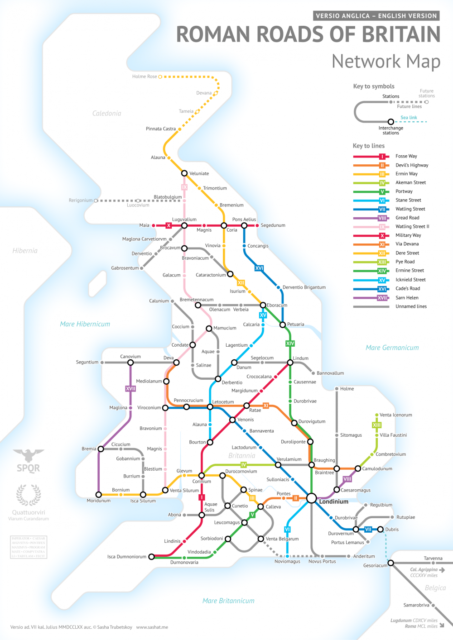The Cynical Historian
Published 27 Jul 2017This one is a contender for best historical film of 2016. The Founder is an amazing movie about the beginning of the McDonald’s food chain. Seriously, more films should take cues from this.
————————————————————
references:
http://www.historyvshollywood.com/ree…http://time.com/money/4602541/the-fou…
http://content.time.com/time/magazine…
https://www.bustle.com/p/how-accurate…
https://www.washingtonpost.com/entert…
https://www.theatlantic.com/entertain…
https://www.nytimes.com/2016/05/20/bu…
http://www.abc.net.au/news/2016-11-24…
http://www.cbsnews.com/news/the-real-…
https://en.wikipedia.org/wiki/Ray_Kroc
https://en.wikipedia.org/wiki/Richard…
————————————————————
contribute to my Patreon:
https://www.patreon.com/CynicalHistorianLET’S CONNECT:
https://twitter.com/Cynical_History
————————————————————
Wiki:
The Founder is a 2016 American biographical drama film directed by John Lee Hancock and written by Robert Siegel. The film stars Michael Keaton as businessman Ray Kroc, and portrays the story of his creation of the McDonald’s fast food chain. Nick Offerman and John Carroll Lynch co-star as McDonald’s founders Richard and Maurice McDonald.The film premiered at Arclight Hollywood on December 7, 2016 and was released in the United States on January 20, 2017, by The Weinstein Company. It grossed $23 million worldwide and received generally positive reviews from critics, with praise for Keaton’s performance.
————————————————————
Hashtags: #History #TheFounder #McDonalds #Review #BasedOnATrueStory #RayKroc
June 24, 2021
The Founder | Based on a True Story
March 22, 2021
Apocrypha: Tour of the Kyrö Distillery
Forgotten Weapons
Published 21 Mar 2021While I was in Finland for Finnish Brutality 2021, I took a day to hitch a train ride up to Isokyrö, about 400km northwest of Helsinki. The Kyrö distillery was founded there in 2012, making single malt Finnish rye whiskey and several varieties of gin.
Their own video does a fine job describing the origins of the distillery:
But I wanted to get a look at the production process — and it’s impressively well set up! The rye is made in a pair of imported Scottish pot stills, and the gin uses a combination of pot and column distillation. They were kind enough to give me a tour of the whole place, so let’s have a look around!
They are distributed throughout the EU, and to a limited extent in the US.
(Apocrypha is a behind-the-scenes periodic series normally only available to Patreon supporters of Forgotten Weapons. Want to see more? Sign up to help support me directly at http://www.patreon.com/forgottenweapons)
June 28, 2019
QotD: “Intelligence” is just a noun
Howard Gardner has also convinced us that the word intelligence carries with it undue affect and political baggage. It is still a useful word, but we shall subsequently employ the more neutral term cognitive ability as often as possible to refer to the concept that we have hitherto called intelligence, just as we will use IQ as a generic synonym for intelligence test score. Since cognitive ability is an uneuphonious phrase, we lapse often so as to make the text readable. But at least we hope that it will help you think of intelligence as just a noun, not an accolade.
We have said that we will be drawing most heavily on data from the classical tradition. That implies that we also accept certain conclusions undergirding that tradition. To draw the strands of our perspective together and to set the stage for the rest of the book, let us set them down explicitly. Here are six conclusions regarding tests of cognitive ability, drawn from the classical tradition, that are by now beyond significant technical dispute:
- There is such a thing as a general factor of cognitive ability on which human beings differ.
- All standardized tests of academic aptitude or achievement measure this general factor to some degree, but IQ tests expressly designed for that purpose measure it most accurately.
- IQ scores match, to a first degree, whatever it is that people mean when they use the word intelligent or smart in ordinary language.
- IQ scores are stable, although not perfectly so, over much of a person’s life.
- Properly administered IQ tests are not demonstrably biased against social, economic, ethnic, or racial groups.
- Cognitive ability is substantially heritable, apparently no less than 40 percent and no more than 80 percent.
Charles Murray, “The Bell Curve Explained”, American Enterprise Institute, 2017-05-20.
June 5, 2019
The four equal-ish regions of Canada
On Reddit, u/the_vizir posted an interesting illustration of Canada divided into four regions of (approximately) equal population, based on the 2015 electoral map:
I used this map of Canada’s Federal ridings by DrRandomFactor as a base. Then I attempted to mirror the original map’s divisions, tallying up the populations of the ridings, as based on this chart from Wikipedia.
Ultimately, the original map proved to be rather accurate in the West, but in the East it was off by quite a bit. Despite my best attempts, I could not get the entire Quebec City to Windsor corridor into two geographically contiguous regions. And so Windsor ultimately got shunted into the Great Orange North.
Interestingly, in terms of ridings, the four regions are also rather equal — which one might consider surprising given the population disparity between the largest and smallest ridings (the least populous riding, Labrador, has 27k people; while Brantford-Brant, the most populous, has 132k). However, in the end, the red region has 80 ridings, the green region 83, the purple region 86 and the orange region 89.
The 25 most populous urban areas within that large, orange region include:
- Halifax, NS — 404k
- Windsor, ON — 392k
- St. John’s, NL — 205k
- Barrie, ON — 197k
- Sudbury, ON — 165k
- Saguenay, PQ — 161k
- Moncton, NB — 145k
- Saint John, NB — 126k
- Thunder Bay, ON –121k
- Chatham-Kent, ON — 102k
- Fredericton, NB –102k
- Cape Breton, NS — 99k
- Sarnia, ON – 96k
- Prince George, BC — 86k
- Sault Ste. Marie, ON — 78k
- Fort McMurray. AB — 73k
- North Bay, ON — 70k
- Charlottetown, PE — 69k
- Grande Prairie, AB — 63k
- Rimouski, PQ — 55k
- Shawinigan, PQ — 54k
- Leamington, ON — 49k
- Truro, NS — 46k
- Prince Albert, SK — 44k
- Rouyn-Noranda, PQ — 42k
Somewhat surprisingly, even on this list, no communities in the Territories make the cut. The largest urban area in the North, Whitehorse, is still only 39th on this list, between Fort St. John, BC and Baie-Comeau, PQ. Yellowknife is 48th, between North Battleford, SK and Yorkton, SK.
The smallest riding in the orange area is Charlottetown at 46 sq. km, followed by Windsor West at 83 sq. km and Dartmouth-Cole Harbour at 102 sq. km. The largest riding in one of the other regions is Cypress Hills-Grasslands at 77,822 sq. km, followed by Kootenay-Columbia at 60,405 sq. km and Souris-Moose Mountain at 43,184 sq. km. All of these were in the purple region and were, unfortunately, necessary to bridge Winnipeg to the Calgary-Edmonton corridor, and then the Calgary-Edmonton corridor to the Lower Mainland.
(To those just looking for random facts: the smallest riding of them all is Toronto Centre, at 6 sq. km, followed by Papineau at 10 sq. km and both Laurier-Sainte-Marie and Rosemont-La Petite-Patrie at 11 sq. km each. The largest ones are Nunavut at 2,093,190 sq. km, Northwest Territories at 1,346,106 sq. km and Abitibi-Baie-James-Nunavik-Eeyou at 854,754 sq. km. And no, that last one doesn’t have the longest riding name. That would be Leeds-Grenville-Thousand Islands and Rideau Lakes, coming in at 49 characters and beating out the previous champion, West Vancouver-Sunshine Coast-Sea to Sky Country).
H/T to halls of macademia for the link.
September 7, 2017
Roman Roads of Britain
Last month, Colin Marshall shared this post on Open Culture:
Though some of Britain’s Roman Roads have become modern motorways, most no longer exist in any form but those bits and pieces history buffs like to spot. This makes it difficult to get a sense of how they all ran and where — or at least it did until Sasha Trubetskoy made a Roman Roads of Britain Network Map in the graphic-design style of the subway maps you’ll find in London or any other major city today. Trubetskoy, an undergraduate statistics major at the University of Chicago, first found cartographical fame a few months ago with his “subway map” of roads across the entire Roman Empire circa 125 AD.
“Popular request,” he writes, demanded a Britain-specific follow up, a project he describes as “far more complicated than I had initially anticipated.” The challenges included not just the sheer number of Roman Roads in Britain but a lack of clarity about their exact location and extents. As in his previous map, Trubetskoy admits, “I had to do some simplifying and make some tough choices on which cities to include.” While this closer-up view demanded a more geographical faithfulness, he nevertheless “had to get rather creative with the historical evidence” in places, to the point of using such “not exactly Latin-sounding” names as “Watling Street” and “Ermin Way.”
July 3, 2017
Homemade train / rail cart riding on abandoned railway tracks
Published on 5 May 2015
Last summer, I build this wooden rail kart from scratch. It’s powered by a 8HP Briggs and Stratton engine. The power is transmitted to the wheels by a selfmade ‘transmission’ with parts from a lawn tractor. It can go up to 50km/h (31mph), the speed is not limited by the engine’s power but by the weakness of the wooden base. (it starts to vibrate quite a lot around 50 km/h).
The 20km long railway has been abandoned for more than 10 years and is quite steep for a railroad. The maximum steepness is 20mm/m (2%) but it is often close to 10mm/m (1.5%)
Fun fact:
The last train that drove on this railroad never got to the train station, as the modern passenger train got stuck on the 20mm/m part of the tracks because of the wheels losing grip!Click here for PART 2:
https://www.youtube.com/watch?t=467&v=2D1l3sMc56cClick here to see a slideshow with some photos of my rail cart:
https://www.youtube.com/watch?v=Am5RQc1_yusUnfortunately, some people destroyed it and stole the valuable parts, there is not much left of it, only the wooden base and the seats.
July 2, 2017
James May crossing his Meccano Bridge
Published on 15 Nov 2009
James May crossing his Meccano bridge in Liverpool across the Mersey (actually a canal). He’s nuts! lol…what a star! He then crosses his bridge, but cheats with a harness.
June 28, 2017
Why do mirrors flip things horizontally but not vertically? | James May Q&A | Head Squeeze
Published on 15 Nov 2013
A mirror is made from a sheet of glass with reflective material applied to one side of the glass. Designed to reflect lights, mirrors are used everywhere from making sure we scrub behind out ears in the morning, to helping us reverse around corners without crashing into a wall.
But what are mirrors exactly?
A mirror is like an old fashioned transparency photograph viewed the wrong way around. A mirror doesn’t reverse left and right, it reverses back to front. Writing appears back to front in a mirror because we present it back to front!
Go on; have a go writing BUM the wrong way around in front of a mirror!
June 13, 2017
Vegetable impostors on your table
The vegetable pushers are clever: they can disguise vegetables in such a way that you don’t realize where they came from. A prime set of examples are all variations of a common Mediterranean weed called Brassica oleracea:
Brassica is also known as the wild mustard plant.
“The wild plant is a weedy little herb that prefers to grow on limestone outcroppings all around the coastal Mediterranean region,” Jeanne Osnas, a researcher at Purdue University who blogs as “The Botanist in the Kitchen,” writes of Brassica oleracea.
“It is a biennial plant that uses food reserves stored over the winter in its rosette of leaves to produce a spike of a few yellow flowers at the end of its second summer before dying. Those nutritious leaves make its domesticated derivatives important food crops in much of the world now.”
This one plant was selectively bred over hundreds of years to create dozens of wildly different vegetables.
By selecting and breeding plants with bigger leaves, or larger buds, the various cultivars were created.
[…]
The amazing evolution of Brassica oleracea goes to show that humans have been tinkering with the genetics of our food – creating what are now known as genetically modified foods, or GMOs – for a very long time.
New lab techniques just let us do that in a more precise and directed way.
May 30, 2017
QotD: The uses of IQ
Suppose that the question at issue regards individuals: “Given two 11 year olds, one with an IQ of 110 and one with an IQ of 90, what can you tell us about the differences between those two children?” The answer must be phrased very tentatively. On many important topics, the answer must be, “We can tell you nothing with any confidence.” It is well worth a guidance counselor’s time to know what these individual scores are, but only in combination with a variety of other information about the child’s personality, talents, and background. The individual’s IQ score all by itself is a useful tool but a limited one.
Suppose instead that the question at issue is: “Given two sixth-grade classes, one for which the average IQ is 110 and the other for which it is 90, what can you tell us about the difference between those two classes and their average prospects for the future?” Now there is a great deal to be said, and it can be said with considerable confidence — not about any one person in either class but about average outcomes that are important to the school, educational policy in general, and society writ large. The data accumulated under the classical tradition are extremely rich in this regard, as will become evident in subsequent chapters.
[…]
We agree emphatically with Howard Gardner, however, that the concept of intelligence has taken on a much higher place in the pantheon of human virtues than it deserves. One of the most insidious but also widespread errors regarding IQ, especially among people who have high IQs, is the assumption that another person’s intelligence can be inferred from casual interactions. Many people conclude that if they see someone who is sensitive, humorous, and talks fluently, the person must surely have an above-average IQ.
This identification of IQ with attractive human qualities in general is unfortunate and wrong. Statistically, there is often a modest correlation with such qualities. But modest correlations are of little use in sizing up other individuals one by one. For example, a person can have a terrific sense of humor without giving you a clue about where he is within thirty points on the IQ scale. Or a plumber with a measured IQ of 100 — only an average IQ — can know a great deal about the functioning of plumbing systems. He may be able to diagnose problems, discuss them articulately, make shrewd decisions about how to fix them, and, while he is working, make some pithy remarks about the president’s recent speech.
At the same time, high intelligence has earmarks that correspond to a first approximation to the commonly understood meaning of smart. In our experience, people do not use smart to mean (necessarily) that a person is prudent or knowledgeable but rather to refer to qualities of mental quickness and complexity that do in fact show up in high test scores. To return to our examples: Many witty people do not have unusually high test scores, but someone who regularly tosses off impromptu complex puns probably does (which does not necessarily mean that such puns are very funny, we hasten to add). If the plumber runs into a problem he has never seen before and diagnoses its source through inferences from what he does know, he probably has an IQ of more than 100 after all. In this, language tends to reflect real differences: In everyday language, people who are called very smart tend to have high IQs.
All of this is another way of making a point so important that we will italicize it now and repeat elsewhere: Measures of intelligence have reliable statistical relationships with important social phenomena, but they are a limited tool for deciding what to make of any given individual. Repeat it we must, for one of the problems of writing about intelligence is how to remind readers often enough how little an IQ score tells about whether the human being next to you is someone whom you will admire or cherish. This thing we know as IQ is important but not a synonym for human excellence.
Charles Murray, “The Bell Curve Explained”, American Enterprise Institute, 2017-05-20.
December 6, 2016
Bowmanville, Ontario from 1984-2016 in Google Timelapse
Description from the Timelapse page:
Timelapse
Timelapse is a global, zoomable video that lets you see how the Earth has changed over the past 32 years. It is made from 33 cloud-free annual mosaics, one for each year from 1984 to 2016, which are made interactively explorable by Carnegie Mellon University CREATE Lab’s Time Machine library, a technology for creating and viewing zoomable and pannable timelapses over space and time.
Using Earth Engine, we combined over 5 million satellite images acquired over the past three decades by 5 different satellites. The majority of the images come from Landsat, a joint USGS/NASA Earth observation program that has observed the Earth since the 1970s. For 2015 and 2016, we combined Landsat 8 imagery with imagery from Sentinel-2A, part of the European Commission and European Space Agency’s Copernicus Earth observation program.
November 8, 2016
Operational analysis: The Battle of the Pelennor Fields
The Angry Staff Officer analyzes the Battle of the Pelennor Fields (called by some the Battle of Minas Tirith) in terms of the six warfighting functions:
… Which leads me to my problem statement for this impromptu mission analysis that I am forcing you into: how did the forces of Gondor wage unified land operations versus the forces of Sauron at the Battle of Minas Tirith? More specifically, how can a primarily infantry force defend against a numerically superior enemy that possesses significant air assets, fires superiority, and freedom of movement and maneuver?
Couched in these terms, the problem statement resembles the complex situation faced by our brigade combat teams in a potential peer-to-peer engagement.
The situation – for those who do not remember it – is as follows: the forces of Gondor have been driven back from their forward defensive strongpoints along the Anduin River in the population center of Osgiliath. The withdrawal had been conducted in an orderly manner until the rear guard covering the retreat came under air attack by the Nazgul, which used their air superiority to drive the defenders into a panic. Most significantly, this air sortie wounded the primary land component commander, Faramir, depriving the forces of Gondor of their most effective warfighter.
More than 30,000 orcs and men of the forces of Sauron then enveloped the battle positions around Minas Tirith and began a siege of the 4,000 or so defenders of the city, which was primarily an infantry force with little in the way of cavalry or artillery. Significantly, the defenders possessed virtually no anti-air defenses, allowing the Nazgul freedom of movement around the battlefield – a dangerous proposition as the Nazgul also wielded considerable psychological damage (not unlike the sound of Stuka dive bombers in World War II). The greatest asset for Gondor was the wizard Gandalf – a force multiplier by any definition of the term – who was serving as the principle mission command adviser to Denethor. The objective for Gondor was to maintain their battle positions and hold out until reinforcements could arrive. However, lines of communication were cut during the siege and Gondor could not be sure that cavalry reinforcements from neighboring Rohan could arrive in time to save the city. This uncertainty weighed heavily on the forces of Gondor.
As a good staff officer, I turn to Army Doctrinal Publication 3-0, Unified Land Operations to understand the problem through the six warfighting functions. And given that J.R.R. Tolkien himself was a British signal officer during World War I, it would be appropriate to start out with mission command.
I imagine the author was grinning when he got to this section:
Luckily for Gondor, Gandalf then assumed command of all land forces, despite his position as a primary staff advisor to Denethor.
Yeah, that’s right, a staff officer took over operations.
Gandalf immediately provided vision and direction to the city’s defenders at a critical moment, as the forces of Sauron were conducting a breaching operation on the gates of Minas Tirith utilizing a battering ram named Grond. Arriving at the enemy point of breach, Gandalf rallied the forces in the engagement area, organized the defense, and directly opposed the primary enemy air and land component commander, the Witch-king of Angmar. The Witch-king was Sauron’s chief captain and commander of the Nazgul. Under his supervision, Sauron’s forces breached the main perimeter to the city and the Witch-king moved through the point of penetration into the far side of the breach, where he was confronted by Gandalf. The two land component commanders were prevented from close combat by the arrival of the primary maneuver element: the forces of Rohan.
H/T to John Donovan for the link.
October 13, 2016
If we’re living in a simulation, do we even want to break out?
I have no expertise in this area, but it appears to me that if the “Silicon Valley billionaires” are right and we are living in a simulated reality there are only two likely options. First, we’re (if you’ll pardon the simplification) “players in the game” — whether we’re aware of it within our simulation or not — and we can leave the simulation in the same way a World of Warcraft or Final Fantasy XIV or Guild Wars 2 player can log off and resume life in “meat space”. Second, most or all of us are actually NPCs and there’s no way to leave the simulation because (some|most|all) of us have no objective existence outside the simulation we currently occupy. If the second option is true … and mathematically it’s the one that’s overwhelmingly likely if we’re actually in a simulation, then there’s little point in discovering that it’s true, as we’ll all cease to exist when our home simulation is turned off.
September 7, 2015
July 31, 2015
Rapido’s Real Train Car Restoration: 1
Published on 21 Jul 2015
The guys at Rapido Trains bought a full-size Pullman sleeping car and are in completely over their heads.








